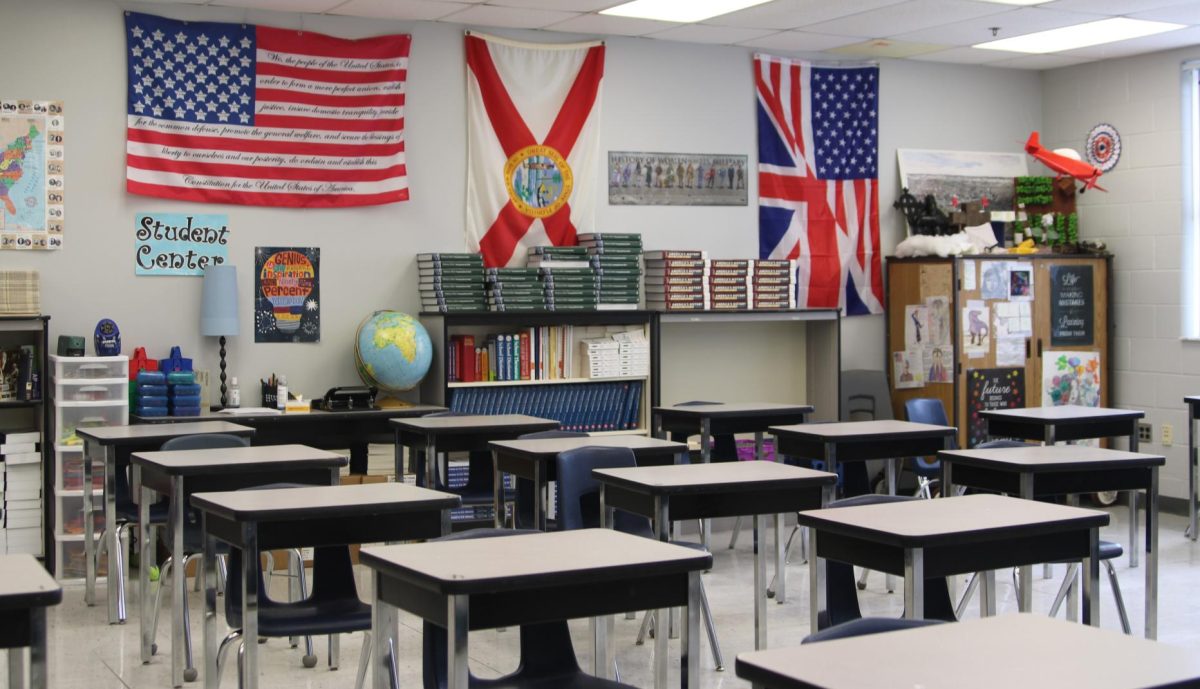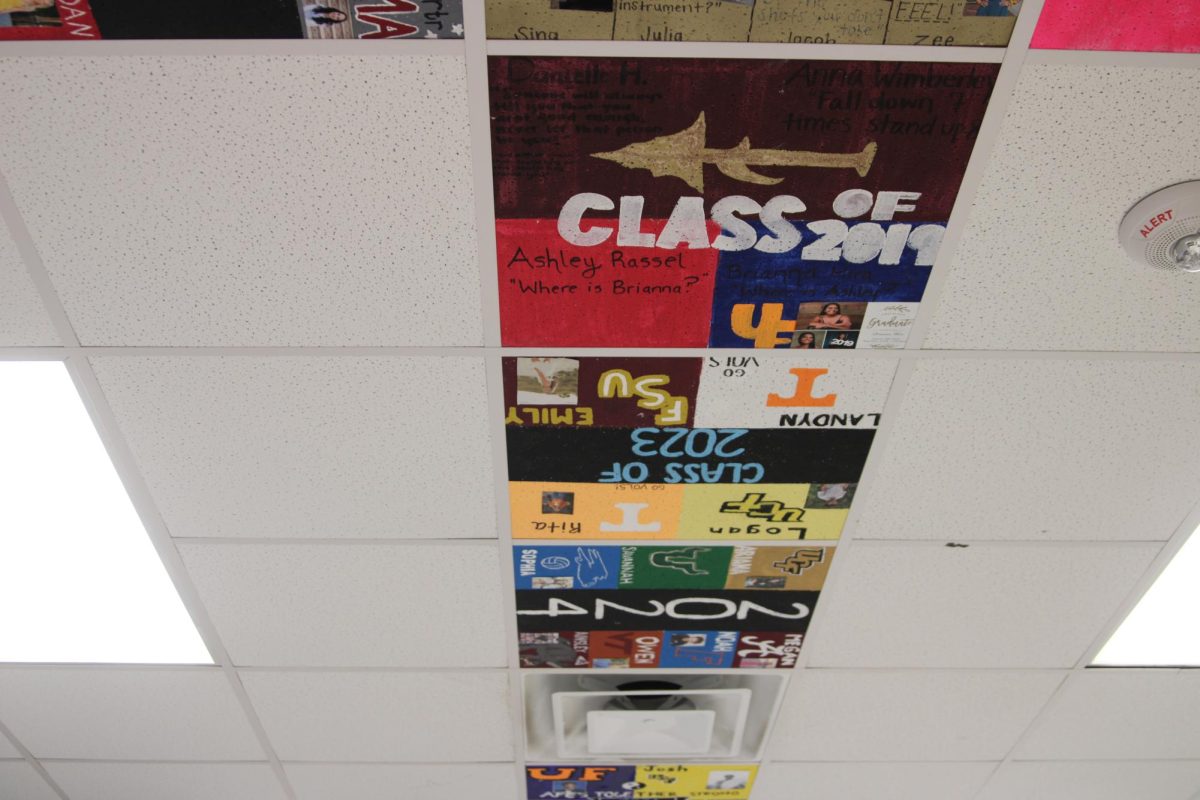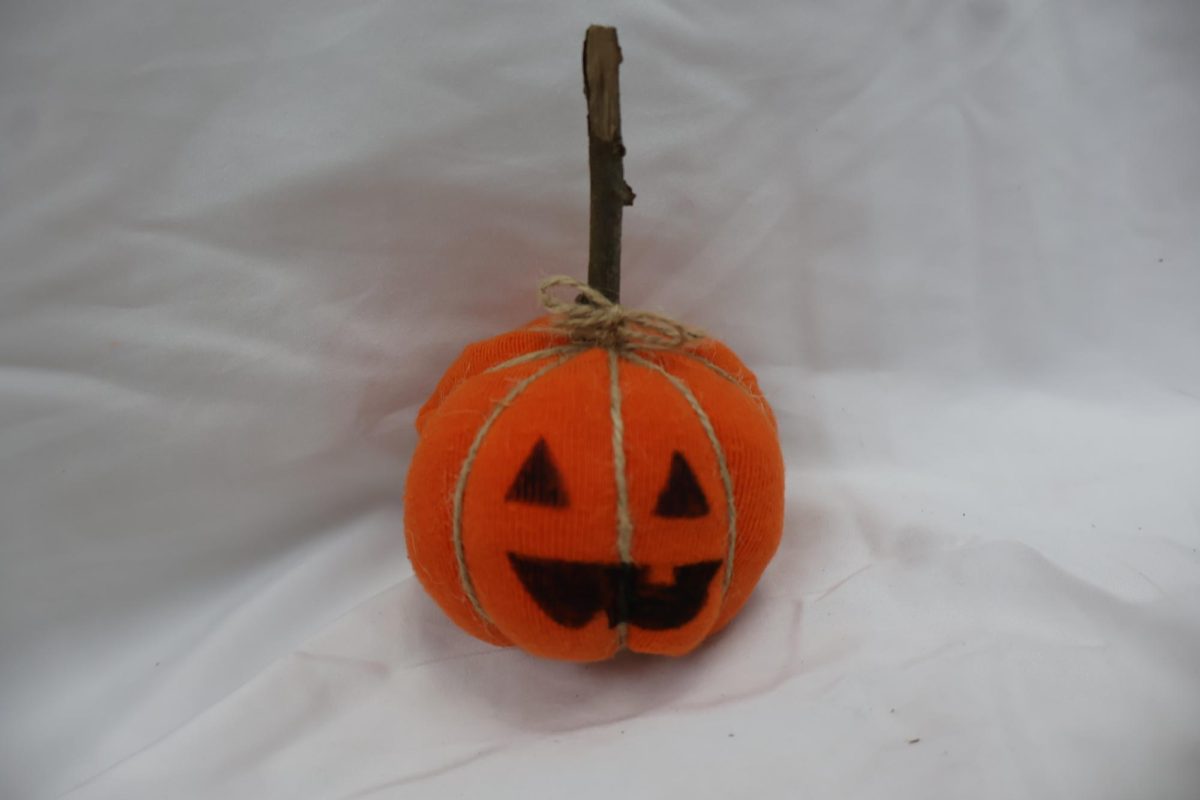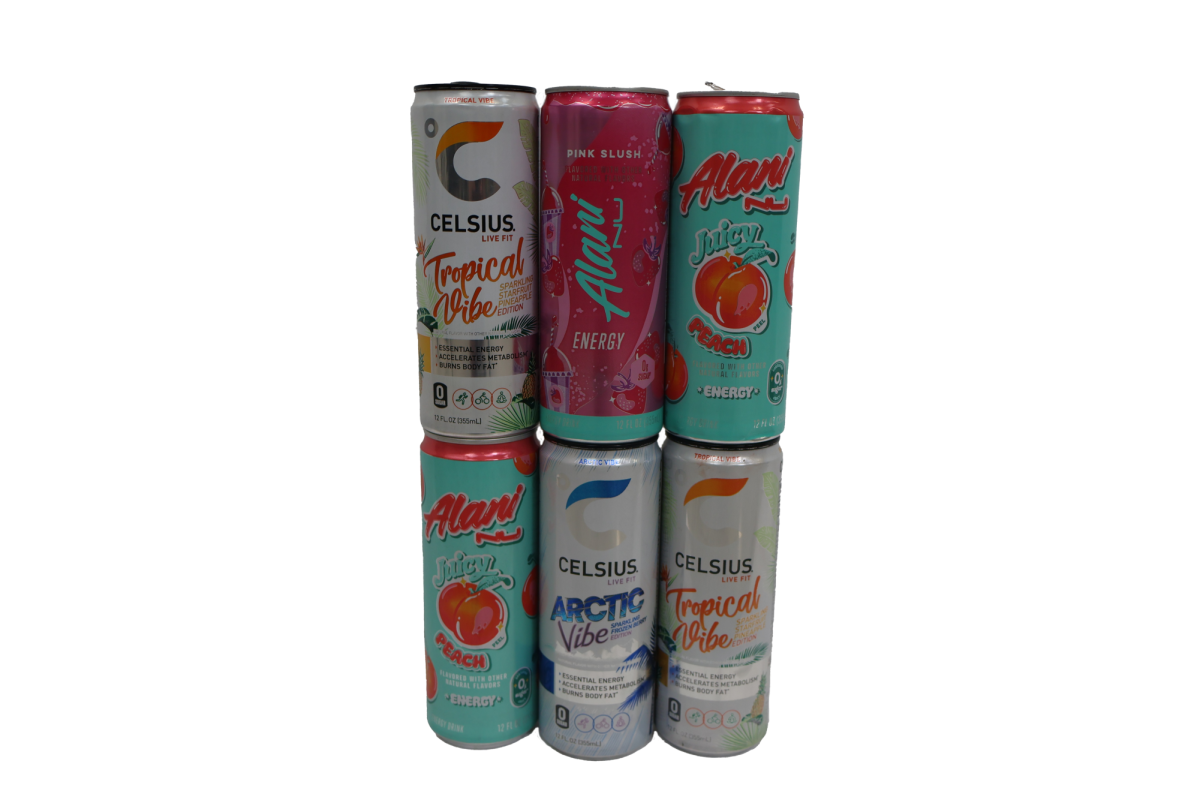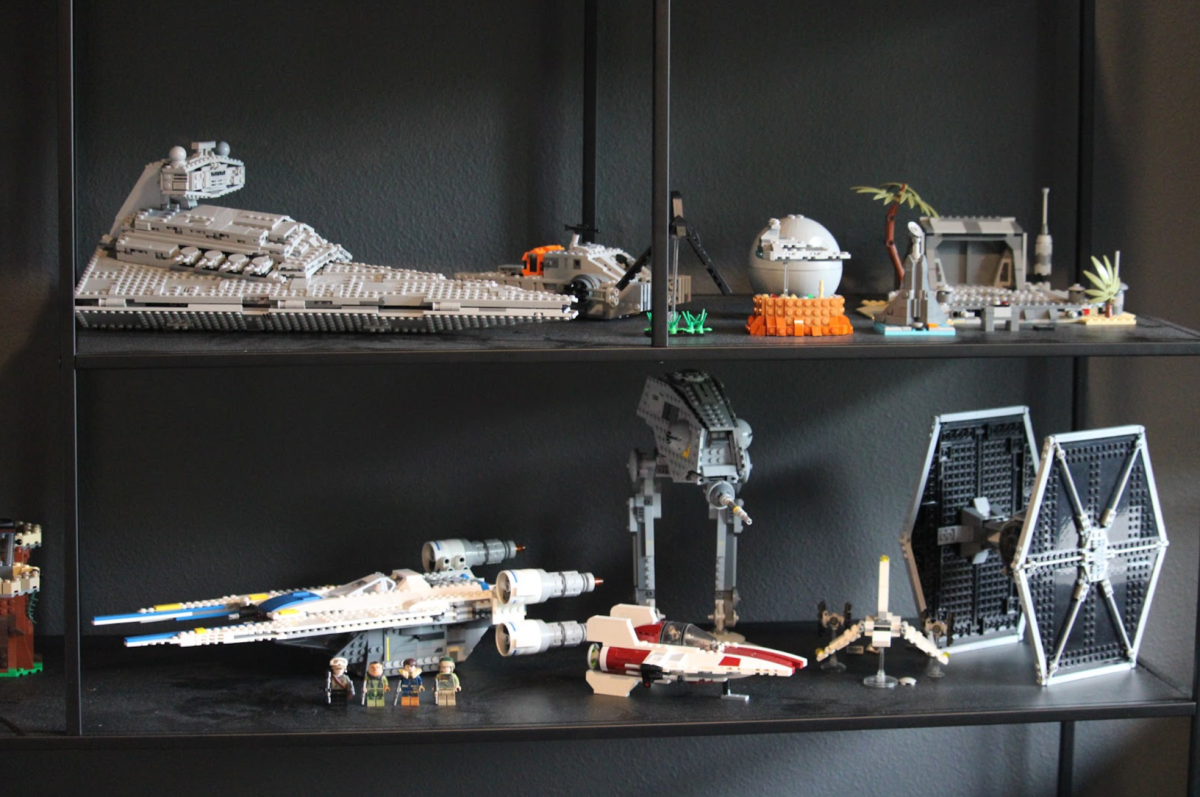Appearance is always the first thing we notice in people—what someone wears and how they look can give away lots of information before even talking to them.
Same goes for classrooms. Imagine walking into class on the first day of school and seeing blank gray walls and a mess of papers everywhere. Right off the bat the mood would change. Teachers spend the better part of their day in their classrooms, so how it looks can signal to students a lot about the teacher’s personality and dedication.
“If there are more academic posters then I feel like it’s just another classroom. But if there are pictures of students, it makes the teacher seem a little more human, so I think more highly of them, especially when they spend the money to make their classroom as comfortable as possible for students,” junior Tyler Harris said.
Walking into a classroom that’s covered in themed decorations and posters can feel rejuvenating, since any extra addition shows the teacher’s passion for the subject.
For junior Sophia Azevedo, how a classroom looks impacts her experience in it, with her history teacher, Amy Bingham’s classroom being one of her favorites.
“I feel a lot more creative in history than I do in math, because there are so many colors and cool things to look at around the room,” Azevedo said. “I don’t like US history, so to have a teacher that’s putting the effort in to make their class very vibrant kind of makes up for it.”
Some teachers put a lot of thought into the color-scheme of their classroom, intentionally trying to make it a space where students feel as comfortable as they can.
“I like to use a lot of different colors, but kind of soft colors, because I don’t want people to come in and feel nervous,” ASL teacher Grace Wilken-Yoder said. “Using a new language can be stressful and can create some anxiety, so I try to use a lot of greens and blues to make it more calming.”
Right next door, ASL teacher Barbara Chaves takes a different approach to picking the colors in her classroom.
I think it’s important for the students to feel at home and also have lots of color and brightness, instead of the block walls. Also, I put reminders of things that they learned during the year, so they’ll always have a cheat sheet around,” Chaves said.
The academic-related posters and photos teachers put up around their classroom not only bring more color to a room, but they also help students who need to visualize concepts.
“I would remember [classroom] photos or a book I saw on [my history teacher’s] shelf when I was writing a DBQ or SAQ and it would really help when I got stuck,” Azevedo said.
Bulletin boards are often used to showcase student work, achievements and even quotes. Human Geography teacher Megan Tompson has a wall in her classroom dedicated to the names of students who received a five on the AP exam.
“It just lets me know that she’s a good teacher and that she does her job well. And [it] shows how many students she’s helped,” Hamby said.
Some teachers also put up quotes and other encouraging posters for their students
“If you have posters about certain content, or posters that are inspirational, it does help students. If their eyes are wandering around the room during the lesson, maybe they’re going to see the poster that says mistakes are proof that you’re trying and get inspired,” Wilken-Yoder said.
Classrooms often have pictures of the teacher’s family, which adds a homey feel. However some teachers take it a step further and leave little relics of their lives around the classroom, which helps students feel more connected to the teacher and all they’ve done in and out of school.
“I’ve got some running medals on one wall, and then in the back wall, I’ve got a bunch of history books and souvenirs for all of my travels, just kind of showing the constant pursuit of history and learning and all of that and hopeful it’ll remind students to never stop learning,” history teacher Erin Foley said.
Something that can be incredibly meaningful to students is seeing work that students have done specifically for the classroom. Lots of art and classrooms that host clubs have ceiling tiles painted by students. Some dedicate a tile to each class of students, others let skilled students paint an individual tile of their choosing.
“When kids customize the classroom, it means multiple kids have been there and have enjoyed the classroom enough to leave their mark there, and they had fun doing it,” Hamby said.
Notes, gifts or cards gifted to teachers are by far the most treasured decorations among teachers. Usually, teachers designate the sport where they will see them as much as possible, because it reminds them of the impact they make on student’s lives.
“When I walk into my classroom, I want to feel inspired. The first thing I do see is the art gallery that I’ve made with students’ work. And it just reminds me that students can really be passionate about learning ASL, because, you know, they put a lot of effort into that, and then I just try to have things around the room that remind me of my purpose and help students remember what they’re trying to do,” Wilken-Yoder said.

